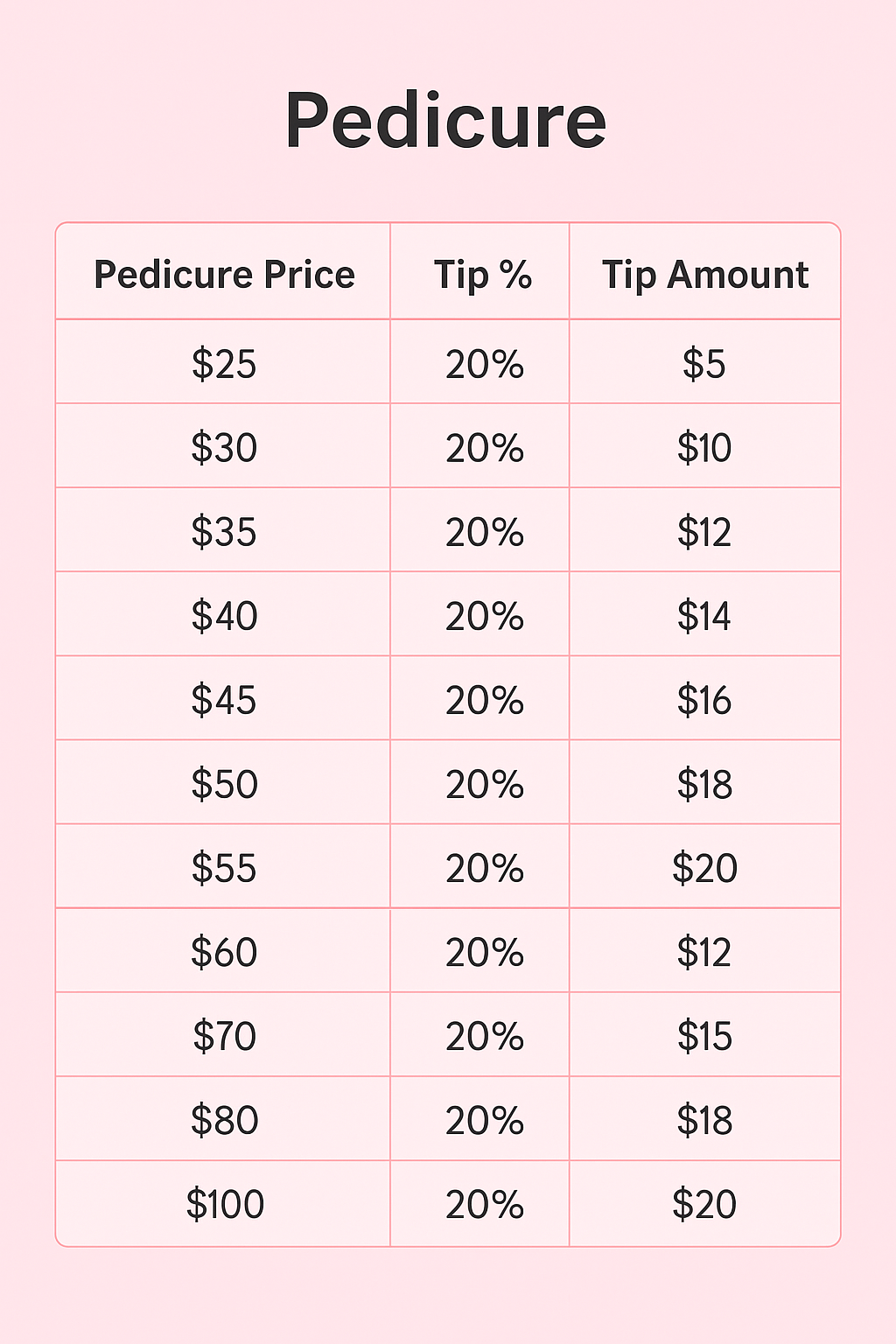Use this Pedicure Tip Calculator to quickly figure out how much to tip at nail salons for your pedicure, manicure, hairdressing, or even restaurant visits.
Quick Pedicure Tip Calculator
Use this tip calculator to estimate how much to tip for pedicures, manicures, facials, haircuts, spa sessions, and mobile beauty services. Works across USA, UK, Singapore, and Canada, adjusting for service type, experience, and add-ons.
Quick Pedicure Tip Chart
Use the below Tip Chart to quickly calculate the ideal tip based on standard %20 tip in USA. You can this for any salon related service, like manicure, pedicure, hairdresser, etc.

